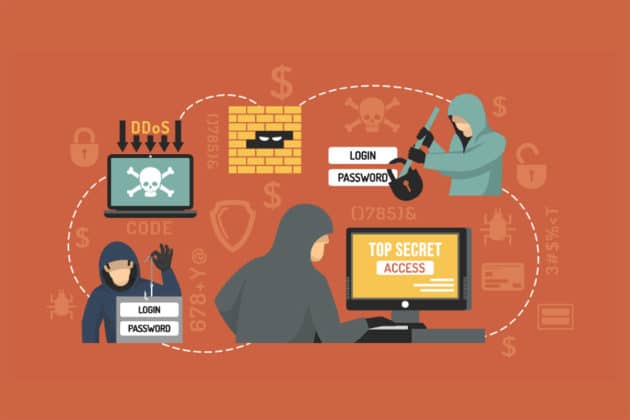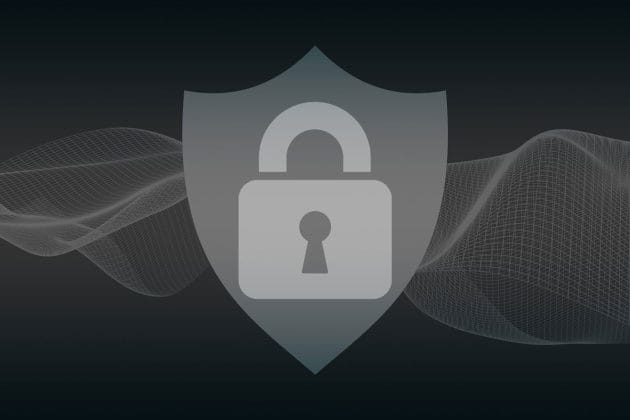No business is immune to cyber threats. Hackers are waiting out there, snooping on your office network, waiting to hack it and steal financial, organizational, and managerial data. It is, therefore, crucial for any business enterprise to focus on its office network security.
While they may have invested in making their network security strong, hackers and snoopers always wait to find a loophole in your security and can penetrate your firewall to steal precious data and info. Businesses can exercise utmost caution and can implement these 15 measures to secure their office network to maintain network security at their office.
What is network security?

The basic purpose of having network security in place is to provide security to computer systems and devices against cyber-attacks. Network security is a combination of hardware and software solutions that identifies threats, analysis them, and prevents them from attacking the computer systems. Network security protects computer systems and specific devices and manages the interaction between each other.
Recommended for you: 17 Cool Tips for Writing a Cybersecurity Policy that Doesn’t Suck.
How does network security function?

Network security consists of multiple layers of controls and defenses. Each layer has a security policy and controls that only authorized persons can only access. The multi-level architecture of network security is spread over the entire organization and prevents malicious threats to infiltrate the organization’s defenses.
Know your network architecture

Knowing the network is important before designing the network security infrastructure. It is important to know the hardware and software that comprise your network infrastructure. The organization should maintain them and secure them against possible threats. These can be:
- Hardware: printers, routers, switches, etc.
- Software: firewalls, devices, Intrusion Prevention Systems, etc.
- Digital Security Certificates: SSL/TLS certificates, IoT certificates, etc.
Network security plans

Organizations should set network security goals and set plans to achieve those goals. They should set roles for employees and identify key personnel who should take care of and is responsible for network security. They should be empowered with privileges and permissions to handle sensitive organization data and have access to vital and sensitive documents and other resources across the network.
What are the common loopholes in network security?

It is vital to understand the various types of security threats to an office network. These are the types of threats that may look to find a loophole in the security and enter the system and gain access to the network. These threats are often masked behind common and unassuming things.
- Weak passwords.
- Out-of-date software and hardware.
- Improper hardware and software installation.
- Flaws in the Operating System of the network.
The most common security threats

Cyber-attacks can take place at any time, so it is crucial to have the best network security. It is a complex thing to put network security in place. Networking professionals should have regular updates about the various threats that might pose danger to their cyber security. These threats may be many, and the most common ones are:
Malware attacks
In a Malware attack, the hacker installs malware into the network or device. The malware then spreads across the entire network, and it often becomes a big problem is it not identified and removed from the network.
Insider threat
Here, a person from within the organization can install a vicious malware into the network. He has full access to the network and poses an insider threat to network security.
Password attack
In this kind of threat, the attacker might hack into a weak password and gain access to the network.
Social engineering
This type of security threat happens when an outsider can impersonate themselves to be part of the organization and attempt to steal and hack the login details, password, etc. Such attempts are made towards persons who are not well-versed with network security.
Data theft
When data theft occurs, hackers steal valuable documents, login details, passwords, and confidential information about the organization.
You may like: 7 Ways How Human Error Can Cause Cybersecurity Breaches.
Tips on securing your network

Policies and procedures about network security have to be strictly laid out and followed. Many factors affect network security. These factors can be controlled by identifying them and implementing strict measures to implement them across all levels of the organization network.
1. Access control

If all users can access the network at all levels, it is a serious threat to the network security of the organization. When planning the architecture of network security, it is important to identify personnel that has to be entrusted with full access to network security at all levels. The organization should restrict access to selected persons who are responsible for their roles.
Granting permission for files, folders and documents is generally what is needed to be accessed. Devices should be identified, and procedures should be followed strictly to grant access through those devices. Similarly, persons should be identified, and those persons should be blocked from accessing the network. This can limit access only to approved persons and they can safely operate the network issues.
2. User identity management

User identity is the most crucial factor that affects network security. It includes identifying users and their authenticity, and what resources are accessed by these users. Permissions have to be defined for each of these users and actions that may be taken by these users to access the resources and assets of the network.
The organization has to identify the sensitive data. The identity of individuals has to be established first and their digital authentication has to be sent with login details and passwords. Individuals have to be identified as customers or employees, and their privileges are to be identified before granting access to sensitive data. Doing this can segregate key individuals and help the organization monitor their actions more closely, to protect data from being breached.
3. Anti-malware

Malware is a computer program and software that can be installed into the network servers so that it can spread into individual devices and steal data. The bad thing about a malware attack is that malware can lie undetected for weeks or months.
Similarly, an antivirus program can detect malware and viruses, worms, ransomware, and spyware and prevent them from installing into the system. In-depth analysis and understanding of the computer network is key to installing a good and effective anti-malware software program. The ability to track files and anomalies is also crucial as human errors do pose a threat to the network system.
Ultimately, the antivirus program should constantly monitor the network and detect incoming malware attacks and virus attacks and take steps to remove them and make them ineffective.

4. Application security

Insecure applications that are unstable and weak in their structure and design pose a serious threat to ransomware and malware attacks. The organization should identify key processes, software applications, and hardware to protect its network. Software and programs that are insecure are a major threat to the network. Programs that are downloaded or paid should be checked for their certificates. There should be protocols that should be applied to such programs to check for their ability to shield against malware and virus attacks.
5. Hardware security

Hardware security is as crucial to network security as software security. It consists of hardware and physical components that offer security to gadgets and devices that are on the network. It also includes server hardware and software.
Hardware firewall and hardware security modules are the components that provide hardware security. Hardware security modules involve cryptoprocessor chips and digital keys. Together, they provide strong authentication to the network server and individual computers.
Hardware security is often, ignored, and more attention is always on the software applications. These hardware modules are plug-in cards or any external device that can be attached directly to the computer or servers. But it is easy for hackers to have access to the network by bypassing the hardware firewall and taking control of the network.
6. AI-based threat protection

Artificial Intelligence (AI) is the driving force that will revolutionize network security. They have already made giant strides in the digital world. Using these powerful AI tools, organizations can use them to provide robust security against malware and security threats. They can even monitor the network and identify a data breach as it happens.
AI tools like QRadar Advisor can prove very effective in discovering network breaches in advance and taking immediate steps to tackle these threats. The automated response of these AI tools and the ability to comprehend and mitigate these network threats is what makes them so effective. They can also provide valuable data and insights into the possible flaws and loopholes in the network architecture and provide a solution to fix the network issues.

7. Email security

Email phishing scams are the top network security threat that an organization can face. A business can face a direct threat from email portals. Email security is the best way that they can exercise to prevent these threats.
Organizations can identify authentic recipients and compile personal information about emails so that they can prevent duplicates from entering their network. Email security applications can help manage outgoing emails and scan incoming messages and block malware from installing into the network.
Training should be given to employees regarding email threats and make them aware of the procedures to identify threats that can come with opening email links and attachments that may look suspicious.
Recommended for you: 12 Types of Endpoint Security Every Business Should Know.
8. Network security firewalls

A trusted firewall is key to network security. A network firewall is like a strong defense that separates the internal network and external network. A firewall is based on rules that identify incoming traffic and traffic that should be blocked by the firewall. Firewalls are key to blocking dangerous programs from installation and help detect cyber threats to the organization. A business has to implement and invest in a powerful firewall to prevent malicious attempts on data and sensitive information and documents of the organization from being stolen.
9. Intrusion detection and prevention

Network traffic has to be monitored continuously and it is the job of Intrusion detection software to detect malicious activity in the network. Once it detects a harmful activity, it scans for other security issues and sends results to admins. The main task and purpose of having an Intrusion prevention system (IPS) like GuardDuty in place are to identify and block incoming network threats from executing themselves.
The IPS has powerful AI tools that monitor the network and devices continuously and identifies patterns of threats. Any incidence of malicious attempts, virus attacks, or malware is instantly detected and reported to the central admins.

10. Mobile device security

Cybercrimes are generally committed through mobiles and smartphones. These are prime targets for scammers and hackers to steal data and passwords. When planning to establish a network security system in place, mobile devices should be considered to be part of the network security. Organizations can cover mobile devices and mobile applications also under their network security.
As business and online shopping is done on mobile devices, it has also attracted cyber criminals to target unassuming people into their traps. Especially, if mobiles are used to access the network and use its resources, such mobile devices need to be controlled and monitored by the network. Mobile device management has to be done and network connections have to be monitored and kept away from the prying eyes of cyber bullies.
11. Wireless security

A wired network can be more robust than a wireless network. A weak wireless LAN network can be most dangerous as it can install Ethernet ports where people can access resources on the wireless network.
Nowadays, there are custom-made products and programs made especially for such wireless networks. These products can help a wireless network to protect against a network threat. These products make use of highly developed and latest security tools like encryption, Wi-Fi points, firewalls, secure passwords, using a VPN to mask the network, and hiding network traffic, and MAC authentication.
12. Cloud security

These are the days when the Cloud is increasingly used to process transactions, run applications, and store data. Businesses are wary of using Cloud services and there are many such instances when the Cloud servers came under attack. But protecting the Cloud so that it can provide a great alternative to doing business is very much needed.
Securing the Cloud is very important these days when devices and physical servers in the network can be hacked and data get stolen. The ways that business can secure their Cloud are using anti-malware, being alert of phishing and email scams, hacking methods, using multi-factor authentication, securing passwords, and monitoring online activity.

13. Virtual private networks (VPN)

One of the best network security tools in today’s world is using a VPN network. VPN is like a masked network where a connection is encrypted between a computer and the endpoint. VPN is remote network access where the device is authenticated, and network communications are established privately.
With a VPN network, the network activity is masked and hidden, and encrypted. It is not visible to anyone. Data is transmitted by a private server and is encrypted. Businesses can use software like Surfshark VPN as a great network security tool to hide their online activity from hackers and ransomware attacks.
14. Web security

Organizations can make their web more secure by controlling web use, blocking unwanted threats, and preventing the network from accessing dangerous sites across the internet. This is the essence of web security and is implemented to protect the website of the organization.
A website can easily be hacked, and network security can be breached when hackers see a vulnerable spot in the web security. These can be in the form of a password being hacked, a remote code being inserted into the network, or an infected file being inserted. Organizations can enhance and improve the level of web protection to tackle these web threats and improve their web security.
15. Preventing loss of data

Data loss is not just the unauthorized loss of data. It encompasses so much more and is a very crucial aspect of an organization’s network security policy. Data loss policy should also include personnel sending crucial company information and details outside the network. It also includes controlling software products from sending data outside the bounds of the network.
Data can also be copied and duplicated by software and such software have to be identified and monitored. Employees should be trained in how to deal with sensitive data, and they should be made aware of the results of a data loss.
You may also like: 5 Reasons Why You Should Hide IP Address for Better Privacy & Security.
Final thoughts

Network security is key for any organization which has loads of data that is valuable. With the development of network security tools, cybercriminals have also sharpened their tools to infiltrate computer systems and networks with malware attacks, virus threats, and phishing scams.
Employees should be instructed and educated in vital aspects of network security. Even IT professionals and teams should work in tandem with network teams to improve the security of the network and identify vulnerabilities that can pose threat to the entire network.
It is thus the above factors that have to be thought of carefully when devising network security protocols and procedures.





